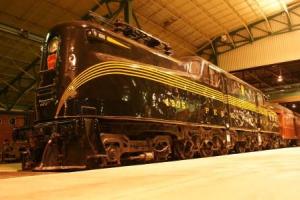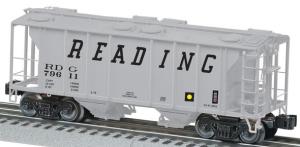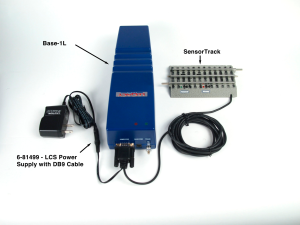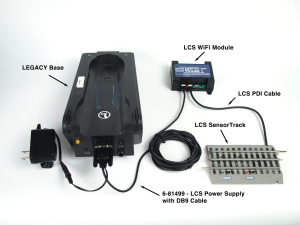This week’s World’s Greatest Hobby travels take us to the City of Brotherly Love. Over the city’s long and rich history, railroads have been as much a part of Philadelphia’s character as the Liberty Bell and cheese steaks. From the 1830s through today, Philadelphia has been as central to the history of railroads as the railroads have been to the city.
The Pennsylvania

Pennsylvania hoppers were a common site around the city serving local utilities and the large export pier.
It is not by accident, luck or coincidence that the long-time offices of the Pennsylvania Railroad (and later Penn Central and Conrail) were located right across the street from City Hall. The Pennsylvania’s political influence upon the city and Commonwealth were perhaps only overshadowed by its economic contributions.
From 1894 to 1952, the Pennsylvania’s corporate offices were held in the upper floors of the magnificent Broad Street Station. The monumental edifice survived fire in 1923 but couldn’t escape the wrecking ball 30 years later. With most of the through passenger trains calling on the newer 30th Street Station (a monument in its own right), Broad Street was raised – its tracks lowered below the valuable city real estate, and a new modern office high-rise erected in its place.
6 Penn Center remained the corporate home of the railroad and its successors until Conrail’s split in 1999. Just across the Delaware River, Conrail remains an important player in the region in the form of the South Jersey Shared Assets Area – a terminal operation serving both Norfolk Southern and CSX as it serves local industry and short lines.
While much of the Pennsy’s passenger infrastructure remains in use today by Amtrak and regional commuter carrier SEPTA (South Eastern Pennsylvania Transportation Authority), the railroad’s historic freight routes continue to feel the daily rumble of freight trains of Norfolk Southern, short lines and others operating on trackage agreements into the busy port city.
The Reading
The Pennsylvania was far from the only major railroad to call Philadelphia home. With the inclusion of its coal operations, the Reading at one time claimed itself the largest corporation in the world – ahead of even the mighty PRR.
Like the Pennsy, the Reading erected a passenger terminal to span the ages in the heart of downtown. In addition to the crack passenger runs like the Crusader and the Wall Street, Reading Terminal hosted dozens upon dozens of commuter trains every day. Today the tracks are gone, but Reading Terminal survives as a bustling downtown market where you can go and enjoy some of the city’s other fine hallmarks.
The Reading’s freight routes north and west out of downtown remain an important artery. Conrail diverted its traffic to the former Reading and Lehigh Valley mainlines in the 1980s and off of the Pennsylvania’s electrified routes. Those traffic patterns remain in place today.
The Baltimore and Ohio
Held at bay by the political might of the others, the B&O was always forced into a distant third-place standing in Philadelphia. It finally reached the city through its own subsidiary the Baltimore and Philadelphia in 1884. Connections with the Central of New Jersey would help the B&O compete for traffic further north and east. Construction and rate competition with the PRR helped put the B&O in bankruptcy and the route was forever in the shadow of the Pennsylvania’s neighboring line (and in many places, close enough to be literally in its shadow.)
Today however, with this historic route in the hands of CSX, competition for Philadelphia’s freight traffic remains viable. With Amtrak trains dominating the former PRR Northeast Corridor, the old B&O has been a more accommodating route for freight.












